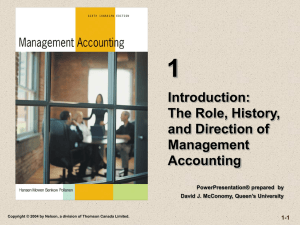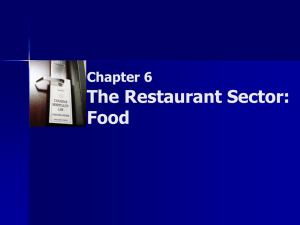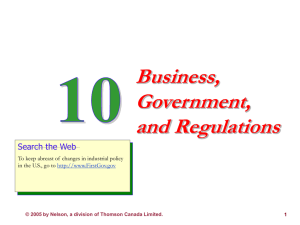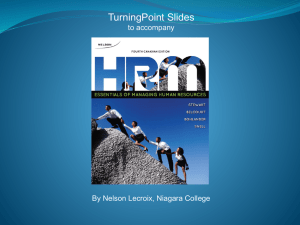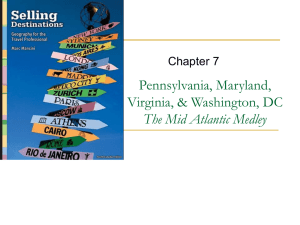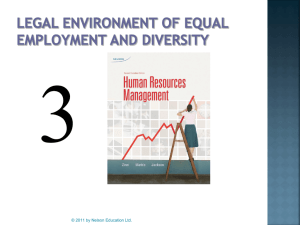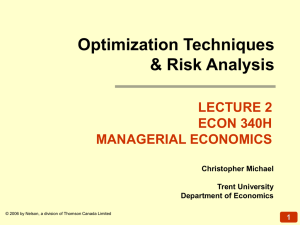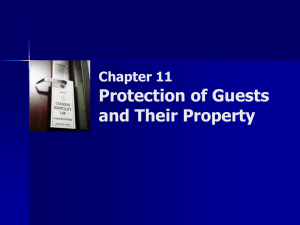PPT Chapter 1: The Canadian Legal System
advertisement
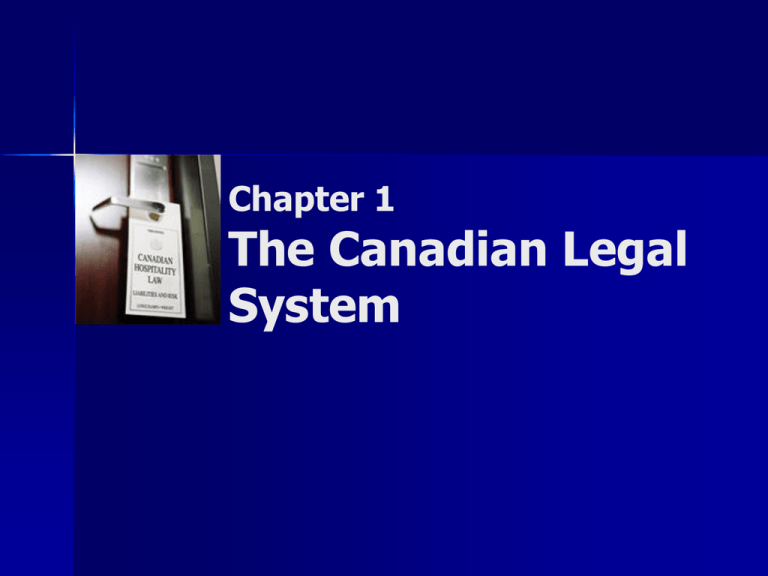
Chapter 1 The Canadian Legal System Summary of Objectives To provide the historical background to Canadian law To identify sources of Canadian law To introduce the concept of legal jurisdiction To compare and contrast criminal and civil legal procedures Copyright © 2007 by Nelson, a division of Thomson Canada Limited 2 What is Law? A formally enacted or customary body of rules recognized as binding on people within a state or a community Enforcement of the set of rules is part of their design in a politically organized society. Copyright © 2007 by Nelson, a division of Thomson Canada Limited 3 Theoretical Bases of Law Positive Law – law created by a person or body with the authority to enact and enforce it Natural Law – law based on moral, religious or philosophical grounds Legal Realism – law is whatever judges say it is Copyright © 2007 by Nelson, a division of Thomson Canada Limited 4 Purposes of Law To maintain the integrity of state boundaries To maintain law and order To protect citizens from each other and from abuse of power by government officials To provide a forum for dispute resolution between citizens or between citizens and government To establish and maintain standards relating to areas such as health, education and employment Copyright © 2007 by Nelson, a division of Thomson Canada Limited 5 Divisions of Law Public law – associated with government and the public interest Private law – associated with interpersonal matters Criminal law – protection of the political security of the state and its citizens Civil law – non-criminal resolution of disputes Substantive law – rights and remedies Procedural law – the procedures through which substantive rights are protected Copyright © 2007 by Nelson, a division of Thomson Canada Limited 6 Canadian Governmental Hierarchy The sovereign, Queen Elizabeth II Federal parliament (House of Commons and Senate) Provincial or territorial legislatures Municipal governments Copyright © 2007 by Nelson, a division of Thomson Canada Limited 7 Players in the Legal System Legislators – elected Judges – appointed Jurors – chosen from citizens who have never been convicted of an indictable criminal offence Lawyers – must have achieved a law degree and been “called to the bar” in order to practise law Clients Police Copyright © 2007 by Nelson, a division of Thomson Canada Limited 8 Sources of Canadian Law Royal prerogatives Legislative enactments Delegated lawmaking Judge-made law Copyright © 2007 by Nelson, a division of Thomson Canada Limited 9 Federal Courts Supreme Court of Canada – nine federally appointed justices with jurisdiction to hear all criminal, civil and constitutional cases Federal Court of Canada – trial and appeal divisions with jurisdiction to hear, for example, cases on patents, copyright, trademark, aeronautics, maritime law, inter provincial and federal-provincial disputes Copyright © 2007 by Nelson, a division of Thomson Canada Limited 10 Federal Courts 2 Tax Court of Canada Court Martial Appeal Court of Canada – military Court of Canadian Citizenship Copyright © 2007 by Nelson, a division of Thomson Canada Limited 11 Provincial Courts Superior Courts of the Province – federally appointed judges with jurisdiction to hear, for example, indictable offence cases like murder or treason under the Criminal Code, divorce cases, civil cases above the ceiling for small claims, and administrative law applications from boards and tribunals Copyright © 2007 by Nelson, a division of Thomson Canada Limited 12 Provincial Courts Provincial Courts – judges are provincially appointed with jurisdiction to hear, for example, less serious Criminal Code offences, support and custody applications in family law, youth court issues and small claims cases Copyright © 2007 by Nelson, a division of Thomson Canada Limited 13 Provincial Courts 2 Provincial Boards, Commissions and Tribunals – specialty quasi-judicial bodies with jurisdiction that includes, for example, liquor licensing, employment standards and labour relations Copyright © 2007 by Nelson, a division of Thomson Canada Limited 14 Civil Court Procedure 5 Stages: Pleadings Discoveries Pre trial or mediation Trial Appeal Copyright © 2007 by Nelson, a division of Thomson Canada Limited 15 Pleadings Plaintiff files statement of claim and has it personally served on defendant Defendant responds with statement of defence Defendant may also counterclaim against defendant, crossclaim against co-defendant, and bring third party claim against someone not a party to the lawsuit Plaintiff responds with reply or statement of defence to the counterclaim Copyright © 2007 by Nelson, a division of Thomson Canada Limited 16 Discoveries Purpose is to identify all facts, issues and evidence prior to trial Each party examines the other under oath. A certified reporter records the questions and answers and prepares a transcript of them. Each party must list all documents relevant to the case and the names of witnesses who will be called. Copyright © 2007 by Nelson, a division of Thomson Canada Limited 17 Pretrial or Mediation Purpose is to settle before trial or reduce the number of issues at trial If a pretrial occurs, that judge is disqualified from proceeding at the actual trial. In some provinces or territories, mediation is mandatory. Copyright © 2007 by Nelson, a division of Thomson Canada Limited 18 Trial Plaintiff makes opening statement and presents case. Plaintiff’s witnesses are examined in chief, and cross-examined by defendant Defendant presents defence in chief, and plaintiff cross-examines. Plaintiff must prove case on a balance of probabilities. Copyright © 2007 by Nelson, a division of Thomson Canada Limited 19 Appeals Appeals of civil cases are not granted automatically. Appeals are usually limited to cases where there was an error of law, not of fact. Copyright © 2007 by Nelson, a division of Thomson Canada Limited 20 Offers to Settle, Costs and Enforcement Parties are encouraged to settle out of court before trial. A party who refuses a reasonable offer may be punished by the court and required to pay the court costs of the other litigant. Garnishment of wages and seizure and sale of the losing litigant’s assets by a sheriff may assist the winning litigant to realize upon a court’s judgment. Copyright © 2007 by Nelson, a division of Thomson Canada Limited 21 Evidence Rules of procedure require that evidence gathered in a manner that infringes or denies rights guaranteed under the Canadian Charter of Rights and Freedoms is inadmissible. Copyright © 2007 by Nelson, a division of Thomson Canada Limited 22 Criminal Procedure Purpose is to protect against acts that threaten the security of a person or the state Types of offences: summary conviction (minor), indictable (serious), and hybrid (the Crown chooses whether to proceed summarily or by indictment) The Crown must prove its case beyond a reasonable doubt. Copyright © 2007 by Nelson, a division of Thomson Canada Limited 23 Criminal Court Procedure First step is arraignment If plea is “not guilty,” the case proceeds to trial. Depending on the charge, the accused may choose trial by jury or by judge alone. Crown calls prosecution’s witnesses and examines in chief. Defence may cross-examine. If Crown does not meet the burden of proof, the presumption of innocence applies. Copyright © 2007 by Nelson, a division of Thomson Canada Limited 24


